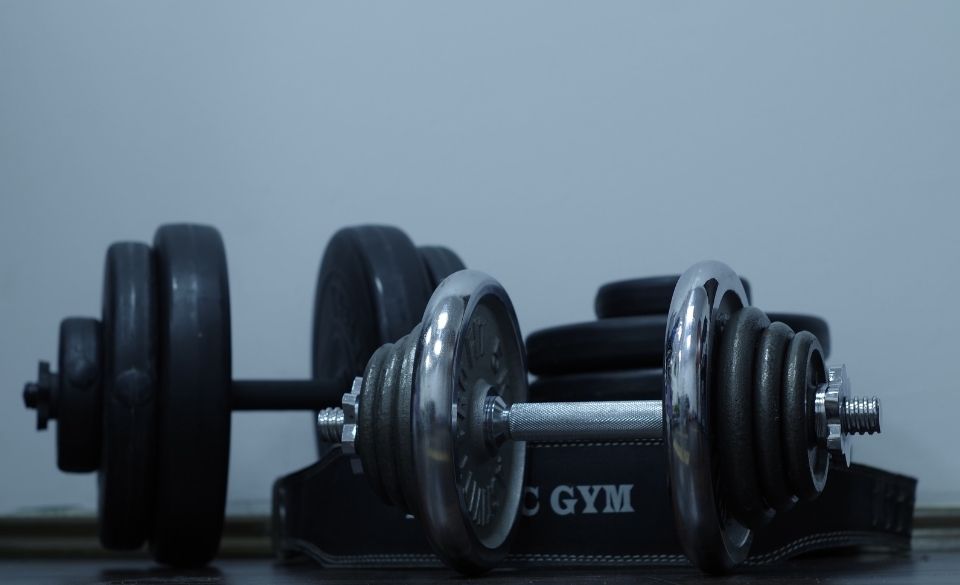
Dumbbell Scap Trap – A Complete Guide to The Bent Over Trap Raise
Page Contents
Looking to take getting fit seriously this new year? If you have a goal in mind for where you want to get toned, picking the right equipment and the right workout routine is essential to meeting it.
Dumbbells are a popular choice of workout aide for good reason; they’re easy to use, accessible at the gym, and have endless possibilities for how you can use them.
However, some Dumbbell exercises might seem to be too difficult for not enough reward – but they don’t have to be; the Dumbbell Scap Trap is one of the best ways to tone your trap and shoulder muscles, build endurance, and push yourself to your limit.
This guide will cover everything you need to know about the Dumbbell Scap Trap, including alternatives and the bent-over trap raise method.
Dumbbell Scap Trap – A Complete Guide
Like any exercise, it’s important to follow the correct method when completing the Dumbbell Scap Trap. This is to make sure you don’t cause yourself an injury, or damage any of the equipment you’ll be using.
To do this exercise, you’ll need a set of dumbbells and a weight bench. The bench needs to be adjustable so that it can be angled to an incline.
Here is a breakdown of the steps for the Dumbbell Scap Trap:
1. Perform pre-workout stretches as usual. Since the Dumbbell Scap Trap focuses on your shoulder and arms, incorporate stretches that warm up these areas to prevent pulled muscles or other injuries.
2. Set your weight bench to a 60-degree angle at an upwards incline.
3. Place the dumbbells at the side of the bench you’ll be using.
4. Lie on the bench and pick up the dumbbells. Make sure you’re in a comfortable position before continuing.
5. Lift and rotate your shoulders in a ‘shrugging’ motion. Focus on raising your middle-back area and tightening your core throughout.
6. At the height of the shrug hold the position for as long as you feel able to. This will help to build strength in your trap muscles.
7. Slowly lower the dumbbells back to a neutral position.
8. Breathe, then repeat.
Understanding The Dumbbell Scaption & Scap Trap
The Dumbbell Scap Trap that we’re focusing on today is a variation of the Dumbbell Scaption exercise.
The Dumbbell Scaption is a standing exercise that involves raising a set of dumbbells above your head and back down, similar to the arm motion of a jumping jack.
Both the Dumbbell Scaption and the Scap Trap focus on building the trapezius muscles, which span the upper back, nape, and shoulder areas. These muscles are responsible for keeping good posture and improving the stability of your spine.
There are many exercises you can do to strengthen the trapezius muscle, but the Dumbbell Scap Trap is one of the best because it can strengthen the upper, middle, and lower trapezius at once with each stage of the exercise.
Some of the benefits of the Dumbbell Scap Trap and Dumbbell Scaption exercises include preventing injury to the trapezius muscle by strengthening, encouraging consistent patterns of movement when working out, and strengthening the stability of the shoulder.

Bent Over Trap Raise
The Bent-Over Trap Raise is yet another version of the Dumbbell Scap Trap and the Dumbbell Scaption exercises.
With the Bent Over Trap Raise, you’ll still be focusing on strengthening the trap muscles, but this exercise can be more accessible for those without access to a weight bench.
To perform the Bent Over Trap raise, you’ll need a surface to rest your arm on. You then place your arm on your forehead, and with the dumbbell in your other hand, shrug your arm upwards, then outwards.
Here is a quick, step-by-step guide to the Bent Over Trap Raise:
1. Stretch and warm-up before attempting the exercise, focusing on stretches that will loosen up the trap muscles.
2. Pick up the dumbbell with whichever hand you want to start the exercise with.
3. Rest the other arm on a flat surface or a fully inclined weight bench.
4. Next, put your opposite foot in front of the other so that your feet and stance are staggered apart. This will keep you firmly placed during the exercise.
5. Relax your back into an arch, and make sure there’s no pressure or tension in your back muscles.
6. Using the arm that is holding the dumbbell, rotate your arm and shoulder to a 45-degree angle.
7. Perform a ‘shrugging’ motion with your shoulder, and move your arm outwards, bringing the dumbbell in line with your shoulder.
8. Hold this position for a few seconds, and then lower your arm and shoulder back to a neutral position.
This should then be repeated for as many reps as you can handle.
You can also do this exercise by not leaning on anything, instead bending forward, and having 1 dumbbell in each hand. The shrugging motion is still the same, but this is a more intensive version of the exercise that will build your back muscles as well as your traps.
Dumbbell Scap Trap Alternative
One of the great things about the Dumbbell Scap Trap exercise is that it’s so flexible and can be adapted to your needs.
For example, a recommended change to the exercise for beginners is to do a one-arm lift as opposed to two. In this case, your other arm can be focused on supporting your weight.
You can also forgo the incline bench and instead perform the Dumbbell Scap Trap while kneeling. This is a great option for anyone who wants to do the exercise at home without a weight bench and is also more comfortable for beginners.
If you are recovering from an injury and want to do the Dumbbell Scap Trap, you can also rest one knee on the incline bench while performing the shrug. This will further help your weight to distribute more evenly and take a lot of pressure off your shoulder and back muscles.
Dumbbell Scap Trap – Closing Thoughts
That’s all we have about the Dumbbell Scap Trap and Bent Over Trap Raise workout. This is an easy, beginner-friendly, complete exercise that still gives you a great workout.
This guide only covered some of the adaptations you can do to these exercises, so try it out for yourself and adapt it to your own strengths to get the best possible gains this new year.


